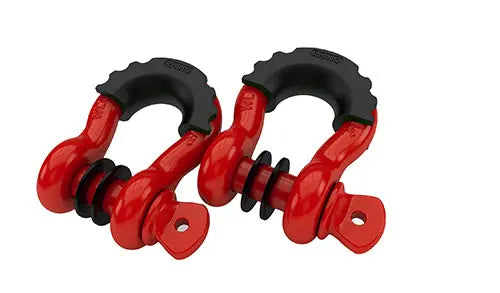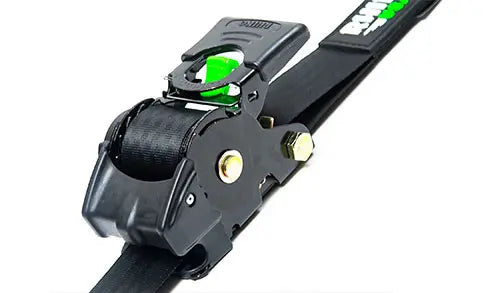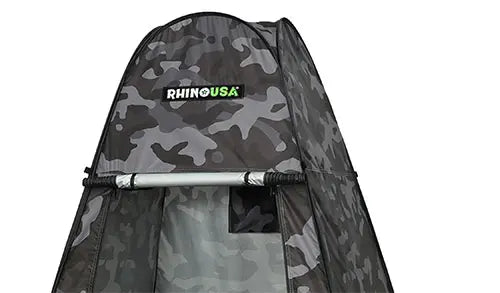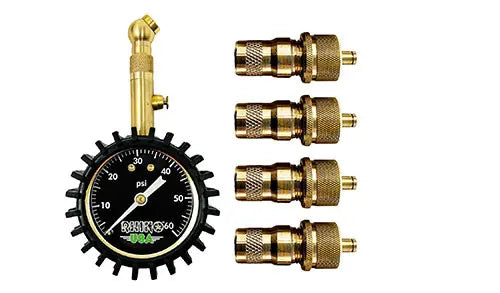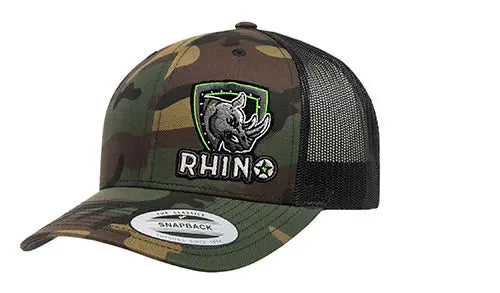
When To Use A Winch vs Kinetic Rope
4x4 enthusiasts use winches and kinetic ropes to help them get out of sticky off-road situations. However, it’s not always clear which tool to use.
Fortunately, this article is here to help. We discuss what winches and kinetic ropes are and when you should use them.
What Is A Winch?

Winches are mechanical devices that wind cable onto a drum to apply tension and pull stuck vehicles out of trouble.
Users attach winches to fixed objects in the environment, such as trees or frames. The winch drum then turns, wrapping the cable around it and pulling the vehicle out of awkward or stuck positions, such as ditches and mud holes. Electric winches are extremely powerful and use high-torque motors to pull 4x4s out of the most challenging situations. When using a winch, it is imperative to have a recovery snatch block to redirect the course of the winch line and almost double the strength of your winch.
MUST READ: 10 Must-Have Winch Accessories (for Off-Roading)
What Is A Kinetic Recovery Rope?

Kinetic ropes are a type of rope that stretches and absorbs energy when subjected to a sudden force. This property makes them suitable in Jeep recovery situations.
Featured Product: Rhino USA 1"x 30' Kinetic Recovery Rope
The way they work is simple. Operatives attach the rope for the front of the stuck vehicle and the rear of the recovery vehicle, leaving it slack. They then accelerate the recovery vehicle forwards, causing the rope to stretch. The elastic energy in the rope then gently but firmly tugs on the stuck vehicle, applying temporarily higher force, even if the recovery vehicle starts rolling backward.
MUST READ: The Best Kinetic Recovery Rope on the Planet!
Features Of Winches Vs Kinetic Ropes
The features of winches and kinetic ropes are different, as shown by the following table:
Winches vs kinetic ropes
|
Feature |
Winches |
|
|
Mechanism of action |
Winding cable onto a drum to apply tension to a heavy load |
Elasticated cable that absorbs energy transmitted by a sudden force and then releases is gently |
|
Power |
Manual, electric or hydraulic. (Most 4x4 winches use electricity) |
Transforms the kinetic energy of the recovery vehicle into elastic energy in the rope |
|
Material |
Usually metal, though sometimes made of other materials |
Usually a blend of fibers, such as braided nylon, that stretch and absorb energy |
|
Main benefit |
Able to pull large, heavy loads with adjustable tension |
Able to reduce the amount of force imparted to the vehicle after a forceful tug |
|
Price |
Significantly more expensive due to the number of moving parts |
Significantly cheaper, due to simple, yet effective design |
|
Usage |
Used for towing vehicles out of ditches, steep slopes and up rock faces |
Used to rescue vehicles from mud, sand, and other situations involving flat terrain |
When To Use A Winch vs Kinetic Rope
Most overlanding enthusiasts carry both winches and kinetic ropes in their vehicles. That’s because each recovery device works better in some situations than others.
Interestingly, though, there are situations where either solution will perform well.
Enthusiasts typically use winches for the following reasons:
- Recovering vehicles if they get stuck in the snow, mud, or difficult terrain where the vehicle’s traction is not sufficient to overcome the obstacle
- Towing broken down or derelict vehicles to a safe location
- Pulling vehicles over rocks or bumpy terrain or up steep climbs
- Loading and unloading 4x4 vehicles onto a trailer
Winches provide the extra pulling power needed to get the job done. However, the applications of kinetic ropes are sometimes different, as shown in the following list:
- Recovering vehicles that are stuck on flat terrain, particularly when the tires sink into the ground or when the terrain is slippery
- Situations in which a winch pull might damage the vehicle
- Situations in which there is no fixed frame or anchor to attach the winch drum
Generally, winches apply their power through torque. Winch drums attach to fixed objects and then use extreme force to consistently tug stuck vehicles over rough terrain and out of sticky situations. By contrast, kinetic ropes use stored elastic energy imparted by the rescue vehicle. This build-up causes a yanking action that frees vehicles without the need for an anchor point.
Conclusion
In summary, off-roaders should carry winches and kinetic ropes in their recovery kits. That’s because both are helpful in sticky situations. Winches are great when you have a fixed anchor point, while kinetic ropes are better when no trees or frames are available.
Rhino USA supplies a range of kinetic ropes for various recovery applications available in different widths for varying loads. Each comes with reinforced hooks and a lifetime warranty for peace of mind.
 FAQ's
FAQ's
How do I choose the right size for kinetic rope?
-
Vehicle Weight: Determine the weight of the vehicle you intend to recover or tow. This is crucial because the kinetic rope's strength and elasticity should be appropriate for the vehicle's weight.
-
Rope Capacity: Check the specifications provided by the manufacturer or seller of the kinetic rope. They usually indicate the recommended weight capacity or breaking strength of the rope. Ensure that the rope's capacity exceeds the weight of the vehicle you plan to recover.
-
Rope Diameter: Kinetic ropes come in various diameters, Rhino USA's ropes range from 5/8 inch to 1 inch. The diameter affects the overall strength and performance of the rope. Thicker ropes generally have higher breaking strengths and are suitable for heavier vehicles.
-
Intended Use: Consider the types of vehicles you will primarily be recovering or towing. If you frequently deal with larger trucks or SUVs, a thicker and stronger rope may be more suitable. For smaller vehicles or lighter recovery scenarios, a thinner rope may suffice.
-
Safety Margin: It's always a good idea to leave a safety margin when choosing a kinetic rope. Opt for a rope with a higher breaking strength than the expected maximum weight you'll be towing. This provides an extra level of safety and ensures the rope is not under excessive stress during recovery operations.
We recommend to use the following chart to determine which size kinetic rope is the most suitable for your vehicle and use case:

- Choosing a selection results in a full page refresh.


